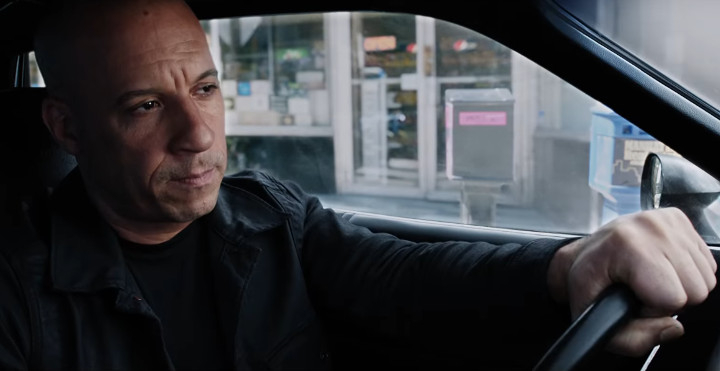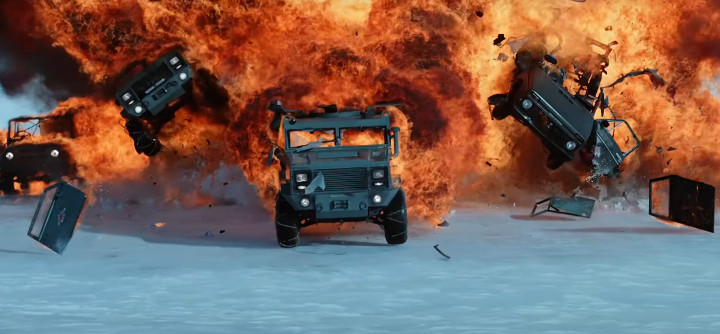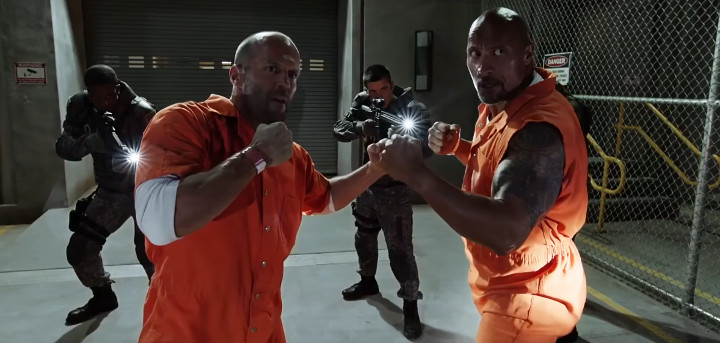
Prior to this weekend past, I hadn’t seen single a Fast and Furious movie. I’d mistakenly written these flicks off as a demographic mismatch, the kind of films that target 18-to-35-year-olds who enjoy scumming their nails with grease while writing carburetor or socket wrench fan fiction.
Since then, I’ve watched Fast Five through Fate of the Furious, and I’ve learned that these movies aren’t just for horsepower enthusiasts. They’re about shiny cars, elaborate stunts, bulging neck muscles, gratuitous booty shots, and unadulterated ridiculousness.
Fate of the Furious fires on all cylinders, combining secret spy agencies, Soviet submarines, a baby-wielding Jason Statham, and honest-to-goodness zombie cars. If you’re as late to the series as I was, you’re completely missing out and should totally watch Vin Diesel fight Tormund Giantsbane this weekend. I’ll admit that watching the eighth entry in the series first left me slightly in the dark on a few inside jokes and winking references, but it galvanized a DVD-buying/renting spree to catch up on what I was told were the crazier (and better) of the sequels that were less about car racing and far more about action set pieces.

But for all the compliments I’ve heaped on this movie, this is not The Avengers, this is not Die Hard, and this is not Indiana Jones. There’s little that’s particularly groundbreaking or extraordinary about Fate of the Furious. So why did it hit $900 million in international gross after two weeks in theaters?
Furious 7’s record numbers in 2015 told us that this was going to happen. It held a short-lived spot in the top 5 highest grossing movies of all time until Jurassic World and The Force Awakens knocked it down to 6th place. While crowds were likely galvanized by Paul Walker’s untimely death (not at all dissimilar to the crowds The Dark Knight saw in the wake of Heath Ledger’s death), this was a series that was steadily gaining traction in both domestic and international markets since its soft reboot after Tokyo Drift bombed in 2006.
In a domestic comparison to its predecessor though, Fate of the Furious is waning. Where F7 blew open expectations with nearly a $150 million opening weekend, F8 came up short at an estimated $98 million. Both have seen similar 60% drops in their second weeks (standard holds for action blockbusters these days) which may indicate that the audience interest hasn’t waned, with the extra $50 million for F7 coming out of sheer respect for the late and lovable Paul Walker.

But headlines aren’t shouting about F8’s domestic performance. International records swelled like Dwayne Johnson’s impossibly proportioned musculature, crushing Jurassic World’s record in a vice-like choke-hold and squeezing past The Force Awakens like that tenth rep you didn’t know you had in you with a whopping $532 million opening weekend barbell squat.
(Those are the types of metaphors and similes one finds in gymnasiums and other such places where buff fellows congregate, no? Moving on.)
We can look to China’s high figures or its consistency in practically every market in the world, but neither of those truly answer my question. Why does a goofy franchise like the Fast and Furious compete on the same box office level with Marvel’s cinematic universe, the new wave of Star Wars movies, and soft reboots like Jurassic World?

Maybe it’s because they’re quaint. Quaint might be the wrong word for films with production budgets between $125 million and $250 million, but here’s a set of action blockbusters setting box office records well into its lifespan without relying on the current studio standards of universe-building or gritty reboots. Instead, these movies take from an old-fashioned playbook, blending in massive amounts of demographic appeal.
Sure, these may seem geared wholly to young men at surface level, but that only really covers the impressive stunts and the copious amounts of female butt in the car show scenes. The cars themselves appeal to men (and some women) of all ages, more likely to older generations that had fewer impediments when it came to working on their own cars. Muscly eye candy abounds for women in the 18-to-35 or 35-to-50 demographics, but none of this ever gets racy enough to ignore the family values instilled at the heart of these movies. Our heroes maim, thieve, and obliterate, but they still say grace at the end of every PG-13 adventure.
While studios so often chase the next big audience trend – be it R-rated romps with familiar characters or movie-verses laden with discourteous after-credits scenes – it goes to show that a few likeable characters, a simple plot, and a fleet of cars to blow up can still pack a theater.
I suddenly have a hankering for a Lethal Weapon marathon.
